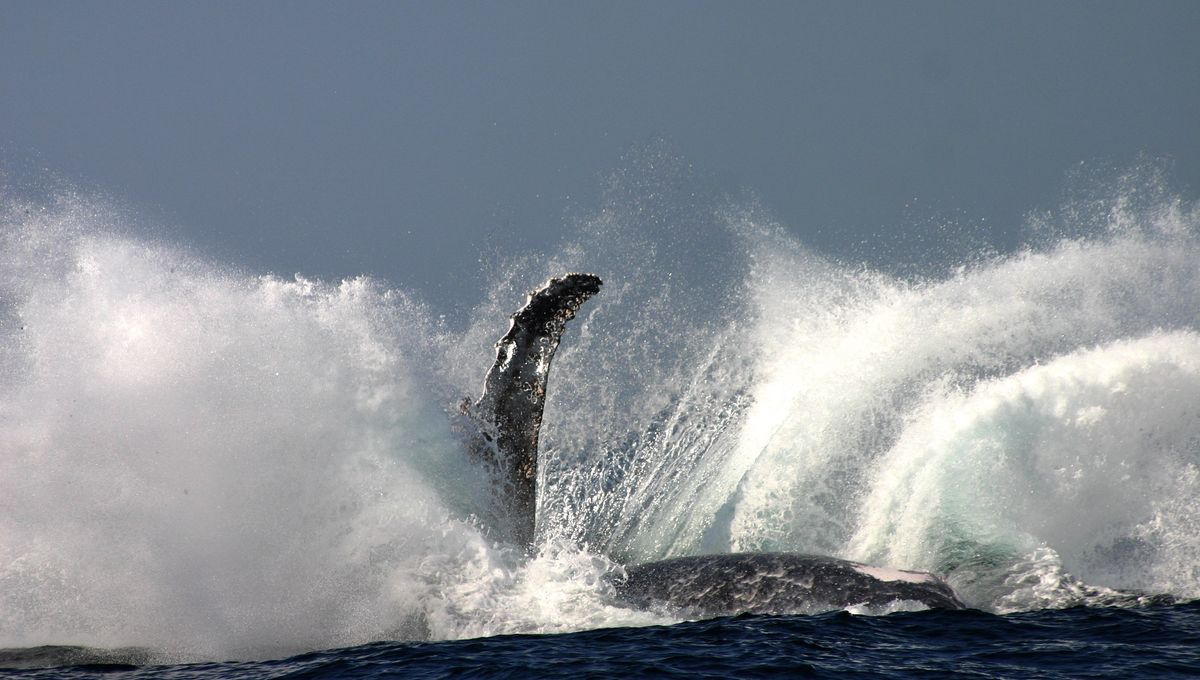
It’s been 54 years since the infamous Exploding Whale of Oregon incident of 1970. Back in 2020, the Oregon Historical Society released footage of the frankly baffling event, in which the highway patrol, under the guidance of the Navy, turned a beached whale into a meaty rainshower.
The video puts the incident into glorious 4K, having been restored by AV Geeks in Raleigh, North Carolina, on behalf of the Oregon Historical Society. For those of you who don’t yet know the tale, a recap:
In November 1970, an 8-ton sperm whale managed to beach itself just off the Oregon coast. As far as send-offs go, bobbing your way onto the beach isn’t the most dignified of affairs. For instance, you’d never suggest it for your nan. However, things were about to get a lot worse for the whale, and about a thousand tonnes more dynamite-y.
At the time, for some reason, the whale fell under the jurisdiction of the highway division. If you ever come across a whale carcass, I’m sure you’ll note how similar the problem of getting rid of it is to telling a driver to fix their tail lights, please.
In their wisdom, and following a call with the Navy (who are world-renowned for solving their problems by blowing them up), they decided to solve the whale problem by, yep, blowing it up. The plan was to get some dynamite and obliterate part of the whale, firing the rest of it out to sea. The theory was that the dynamite would propel most of the carcass far enough out that it would drift into the ocean, leaving the smaller, more digestible (and let’s face it, cooked) bits of delicious whale corpse for the smaller animals like seagulls to eat.
So far, so grim, but hardly something to name a park for.
Now, you’d think if you were going to blast a whale to smithereens you’d sit down and have a bit of a think about how much dynamite was necessary, rather than just put 20 crates underneath it and “see what happens”. Or maybe you’d at least listen to somebody with explosives training when they tell you, “I think you’ve overdone the old dynamite if I’m honest.” Well, you’d be wrong.
Enter businessman Walt Umenhofer. He was on a drive around Florence, Oregon in a brand new car bought a few days earlier from a car dealership offering a “whale of a deal” promotion (this will become relevant later, for fans of whale corpse-based serendipity) when he happened upon the scene. Umenhofer had received explosives training during World War II and was not convinced the highway division had got their calculations right. He told them they either needed much fewer explosives to push the whale out to sea – he suggested 20 sticks, where they were using 20 crates – or a hell of a lot more, in order to completely obliterate the carcass into tiny chewable whale nuggets.
The head of the project dismissed him, so Umenhofer retreated as far as he could to watch the inevitable disaster, behind his shiny new whale-free car. Joining him were local journalists documenting the whole thing and citizens who just fancied a bit of a gawp. (Look, I’m not saying I’m proud of myself but if someone said “There’s a bunch of people at the beach who have never blown up a whale before about to try and blow up a whale,” I’m not not pushing my way to the front.)
All that was left to do was for highway engineer and project manager George Thornton to tell reporters – and this is a direct quote, as you’ll see in the video below – “I’m confident that it’ll work, the only thing is we’re not sure how much explosives it’ll take to disintegrate this thing.”
At this point, I’m going to insist that you watch the newly-restored footage because it is the best thing available on the Internet, cats included.
The explosion caused massive pieces of blubber to get blown quite some distance onto buildings, cars in parking lots, and people who had previously been minding their own business and enjoying how whale blubber wasn’t currently raining down from the sky.
“Explosions in the movies usually look like a blast of fire and smoke,” journalist Paul Linnman said later, describing the incident in a book. “This one more resembled a mighty burst of tomato juice.”
The whale debris rained down such a distance some hit the shiny new car belonging to Walt Umenhofer, completely caving in the roof, which you’ll remember from a few paragraphs prior, he bought in a whaley good deal.
“My insurance company’s never going to believe this,” Umenhofer reportedly said as a highway worker removed some blubber from his car with a shovel.
After all this, Thornton told reporters that “it went just exactly right,” except for the blast creating a hole underneath the whale, thereby causing the whale to be blasted towards the onlookers rather than the ocean, creating the meaty downpour of partially cooked whale soup.
Luckily, the people of Oregon have decided to embrace their heritage and celebrate the unusual event, even naming a memorial park after it.
An earlier version of this article was published in November 2020.
Source Link: Oregon's Infamous Exploding Whale Incident Of 1970